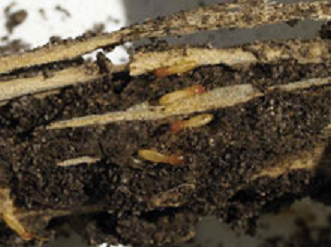Termite Attacks

In nature, termites play an important part in the ecosystem in that they feed on dead trees and plants, thus returning the nutrients to the soil so new growth can occur. They feed on wood and serve an important function in nature by converting dead trees into organic matter. Their greatest contribution is the role they play in recycling wood and plant material. Their tunneling efforts also help to ensure that soils are porous, contain nutrients, and are healthy enough to support plant growth.
What are termites?
Termites or white ants, as they are commonly called, are found most abundantly in tropical countries and are widely distributed in temperate regions. Termites are unique among insects in their ability to derive nutritional benefit from cellulose, which is the component of wood and plants that gives structural rigidity to cells. They contain bacteria in their digestive systems that break down the complex carbohydrate cellulose into simpler carbohydrates that the termites can use for energy. Since cellulose is the major constituent of most plant tissues, it follows that the majority of plants and plant products are likely to be susceptible to termite damage.
Termites Attacks in Building – click to see the article
Termite Ecology
Termites feed on dead plant cell wall material, such as wood, leaf litter, roots, dead herbs and grasses, dung, and humus. Chemically, their food can be characterized as lignocellulosic matter, which is the most abundant organic material in the biosphere. Termites are able to digest cellulose, and some species can also digest lignin, with the assistance of symbiotic intestinal protozoa and bacteria. Many termites also have symbiotic relations with nitrogen fixing bacteria. In converting lignocellulosic biomass to insect biomass, termite production supports a large proportion of tropical vertebrate biodiversity, including many species of amphibians, reptiles, birds, and ground foraging insectivorous mammals.
Termite Nest (Termitarium)
The queen, the brood and most of the colony’s individuals live in a so-called termitarium (plural: termitaria). It is composed of mud that is sometimes as hard as concrete and a paper-like substance made from chewed wood. The conditions inside the nest are dark, moist and cool and suit the requirements of the mostly blind unpigmented termites with their soft cuticles. Runways or galleries are built by the workers radially from the nest in all directions and connect the termitarium with sites where the colony gathers food.